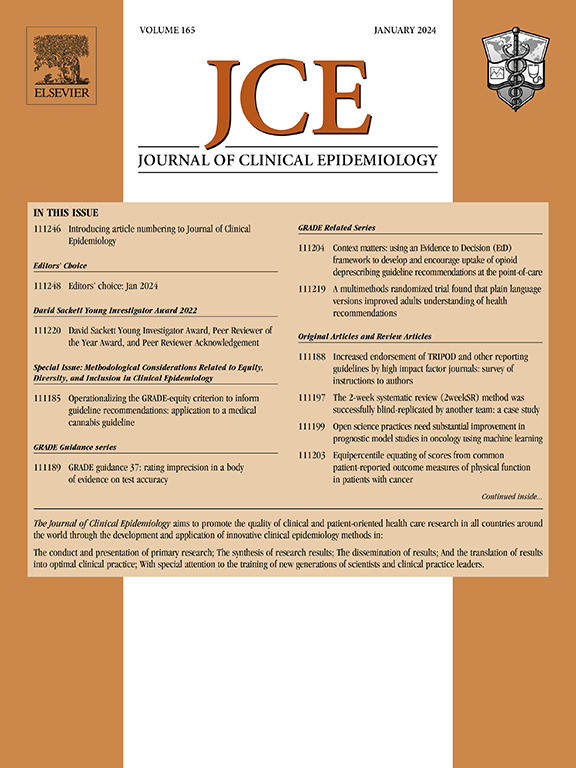The number needed to treat: it is time to bow out gracefully
IF 5.2
2区 医学
Q1 HEALTH CARE SCIENCES & SERVICES
引用次数: 0
Abstract
The number needed to treat (NNT) is a simple-to-understand absolute effect measure. However, it is only sensible when the risk difference is statistically significant. We highlight two important limitations of using NNT in the context of decision-making (developing a guideline, a policy decision, or a health technology assessment). The first limitation of NNT relates to difficulties in expressing and interpreting the confidence interval (CI) for the NNT when the CI of the risk difference includes the null (ie, the results are not statistically significant). This CI of NNT will be disjointed and will include implausible values. The second limitation of NNT relates to the increased complexity of trading off benefits and harms on the NNT scale. This proposal calls for abandoning the use of NNT from decision-making contexts.
Plain Language Summary
The number needed to treat (NNT) has statistical and methodological limitations that make it unhelpful in the context of developing clinical practice guidelines and policy decisions.
需要治疗的人数:是时候优雅地退出了。
需要治疗的人数(NNT)有统计学和方法学上的局限性,这使得它在制定临床实践指南和政策决定的背景下没有帮助。在临床实践指南的制定过程中,专家小组成员会问这样一个问题:“治疗(NNT)所需的数字是多少?”事实上,nnt在许多临床实践指南中被显著引用。[1-3]这个问题表明专家组成员不希望仅仅根据相对效应(如相对风险、优势比或风险比)提出建议,这是一个很好的决定。这个问题表明,专家组成员对了解干预对具有确定基线风险的人群结果的绝对影响非常感兴趣。然而,我们认为NNT不是一个有用的决策效果测量,例如在制定临床实践指南,政策决定或卫生技术评估中,我们不鼓励在这种情况下使用它。相反,绝对风险差(RD)是一个更合适的衡量标准。
本文章由计算机程序翻译,如有差异,请以英文原文为准。
求助全文
约1分钟内获得全文
求助全文
来源期刊

Journal of Clinical Epidemiology
医学-公共卫生、环境卫生与职业卫生
CiteScore
12.00
自引率
6.90%
发文量
320
审稿时长
44 days
期刊介绍:
The Journal of Clinical Epidemiology strives to enhance the quality of clinical and patient-oriented healthcare research by advancing and applying innovative methods in conducting, presenting, synthesizing, disseminating, and translating research results into optimal clinical practice. Special emphasis is placed on training new generations of scientists and clinical practice leaders.
 求助内容:
求助内容: 应助结果提醒方式:
应助结果提醒方式:


